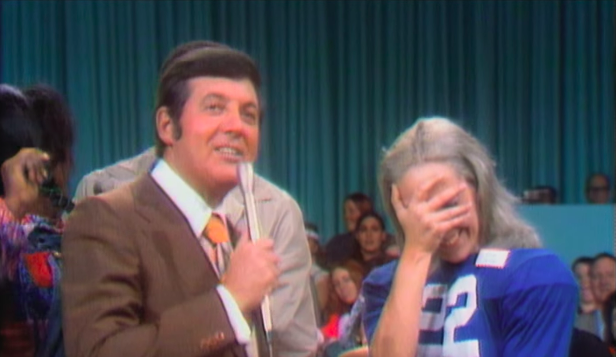The Monty Hall Problem
Suppose you’re on a game show, and you’re given the choice of
three doors 🚪🚪🚪.
Behind one door is a car 🚗;
behind the others, goats 🐐🐐.
You pick a door, say No. 1, and the host, who knows what’s behind the doors, opens another door, say No. 3, which has a goat. He then says to you, “Do you want to pick door No. 2?”
Is it to your advantage to switch your choice?
If you think switching will not make a difference and your chance of winning is 50% either way, you are wrong. But it’s all good. So were thousands of renowned mathematicians and professors.
This 43-year-old famous probability puzzle is called the Monty Hall Problem. It is actually the reason why I started this blog. It presents the perfect opportunity for an interactive article where one can simply do the experiment and observe the results, which is what this blog is all about.
The puzzle was inspired by the game show Let’s Make a Deal, which does actually involve doors and cars; but not necessarily switching choices or goats.
The name of the problem comes from the show’s former host Monty Hall, who passed away recently on September 2017. Reading about his death reminded me about this puzzle and convinced me to finally start working on creating my blog. Disappointingly, his death did not receive a great deal of media attention, certainly not as much as it should. Mr. Hall himself enjoyed this brain teaser. In fact, he once conducted its simulation at his own Beverly Hills home in 1991.
Most people will remember him only as a game show host or as the person who gave this puzzle its name. But after his death, Monty Hall’s granddaughter shared a very touching story about how he was able to go to college.
hey, there's a really great and relevant story about my grandfather that no one is telling today. It's about what it took for him to go to college, and the man who made it happen. https://t.co/lfcLXUPmtD
— maggie tokuda-hall (@emteehall) October 1, 2017
If you enjoy nostalgia as much as I do, you can go to YouTube and find old episodes of Let’s Make a Deal from the 70s. Somehow, the combination of 4:3 aspect ratio and the low resolution makes me wish I could live in those “simpler times”. 🤓

The original -and slightly different- version of the Monty Hall Problem appeared on The American Statistician in 1975. However, it took another 15 years for the question to become a famous brain teaser. In 1990, a Parade Magazine reader asked the question to Marilyn vos Savant, who is known for getting into Guinness Book of Records for having the highest recorded IQ in the world.
Vos Savant, who was answering the reader’s question in her “Ask Marilyn” column wrote:
“Yes; you should switch. The first door has a 1/3 chance of winning, but the second door has a 2/3 chance.”

Though her answer was correct, she has received about 10,000 letters from outraged readers with PhDs, including famous academics, who were vehemently arguing that she is wrong.
Priceonomics has an excellent post, The Time Everyone “Corrected” the World’s Smartest Woman, explaining the outcry and vos Savant’s subsequent explanation of her logic.
People have attempted to explain the solution in many different ways. Here is my attempt: Because it is unlikely that you have chosen the right door in the first place, the new hand-picked door by the host has a higher chance of being the correct one. The host is forced to provide you new information which you can benefit from. But I don’t believe there is a simple way to explain it in a way that it starts making sense and becomes intuitive. There is a reason why the problem is often called the Monty Hall Paradox. It is a veridical paradox, which means the solution can be proven mathematically, beyond doubt, but it still won’t make sense to your intuition.
Every Possible Combination
We can list all the possible ways a single round of the game can play out, depending on the location of the car:
- The car is behind Door 1…
- …and you pick Door 1:
- Switching LOSES
- …and you pick Door 2:
- Switching WINS
- …and you pick Door 3:
- Switching WINS
- …and you pick Door 1:
- The car is behind Door 2…
- …and you pick Door 1:
- Switching WINS
- …and you pick Door 2:
- Switching LOSES
- …and you pick Door 3:
- Switching WINS
- …and you pick Door 1:
- The car is behind Door 3…
- …and you pick Door 1:
- Switching WINS
- …and you pick Door 2:
- Switching WINS
- …and you pick Door 3:
- Switching LOSES
- …and you pick Door 1:
Out of 9 possible scenarios, switching the door wins in 6 cases, whereas sticking with the choice wins in 3 cases. Based on this, we can clearly say that switching will double your chances from 1/3 to 2/3.
The Experiment
Let’s play the game. The location of the car will be determined randomly before each round. Each time, you will simply pick a door and one of the goats will be revealed randomly.
Stick (Win %): 0%
Switch (Win/Total): 0 / 0
Switch (Win %): 0%
If you play with this for long enough, winning percentage for Stick should settle somewhere around 33% and winning percentage for Switch should end up being close to 66%.